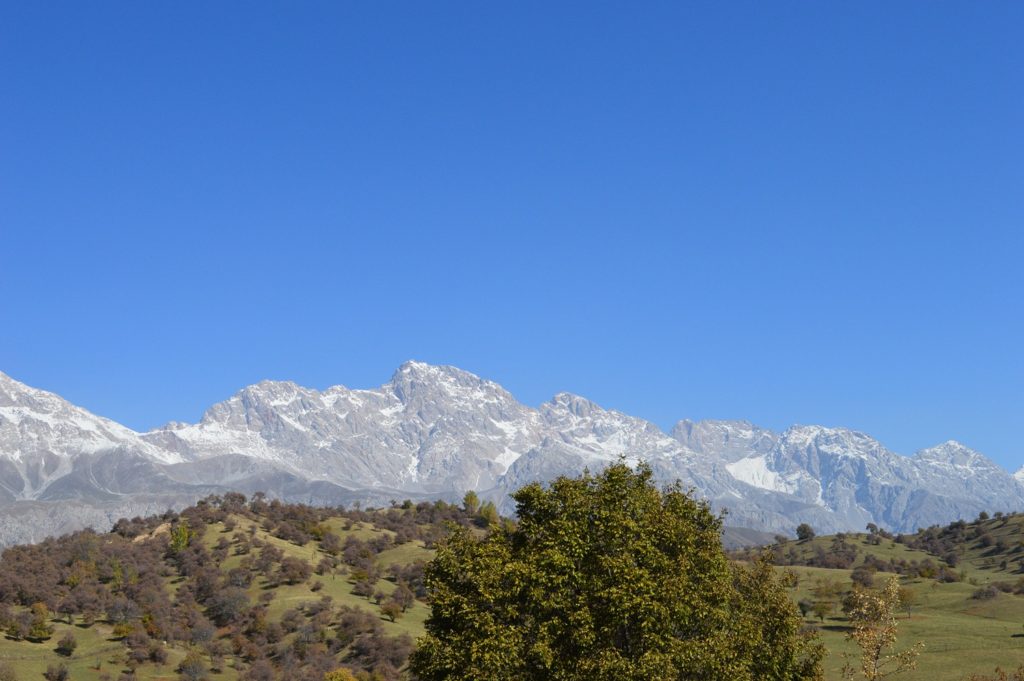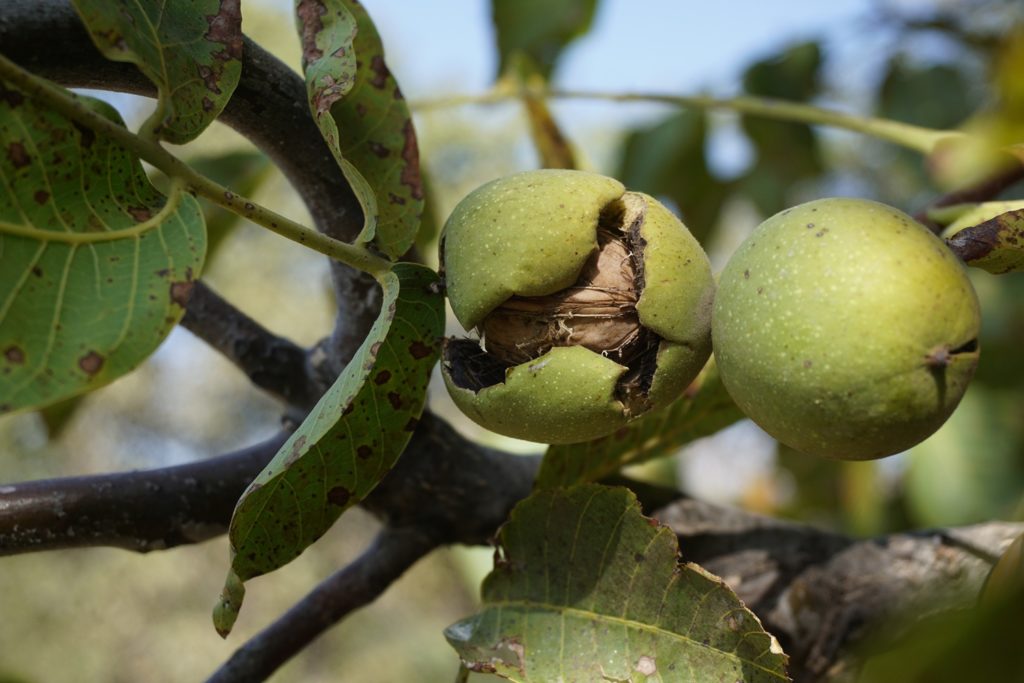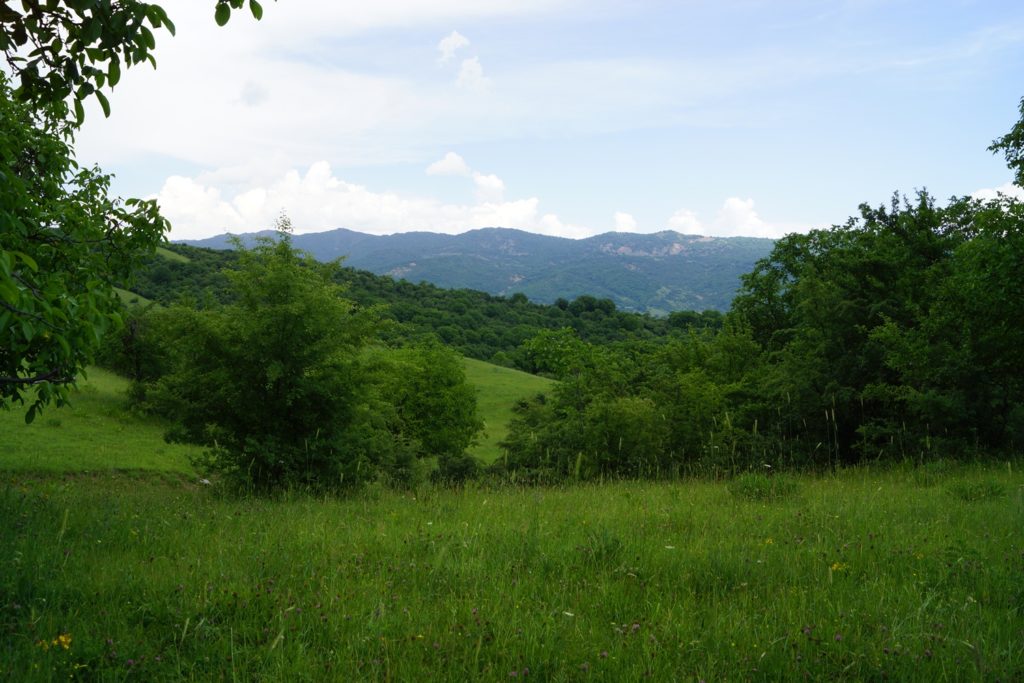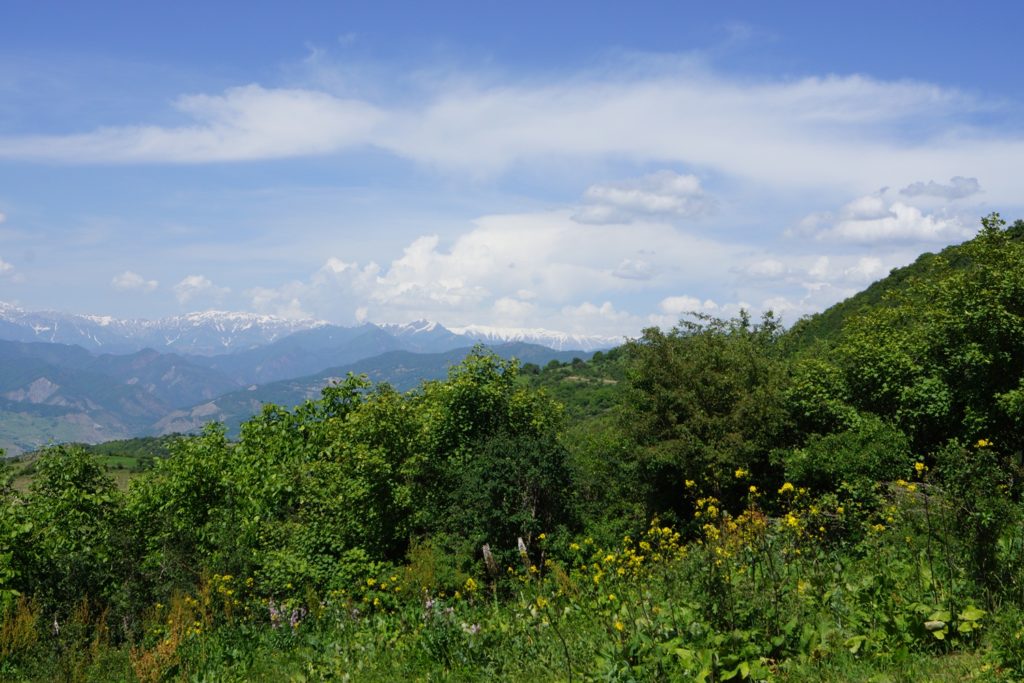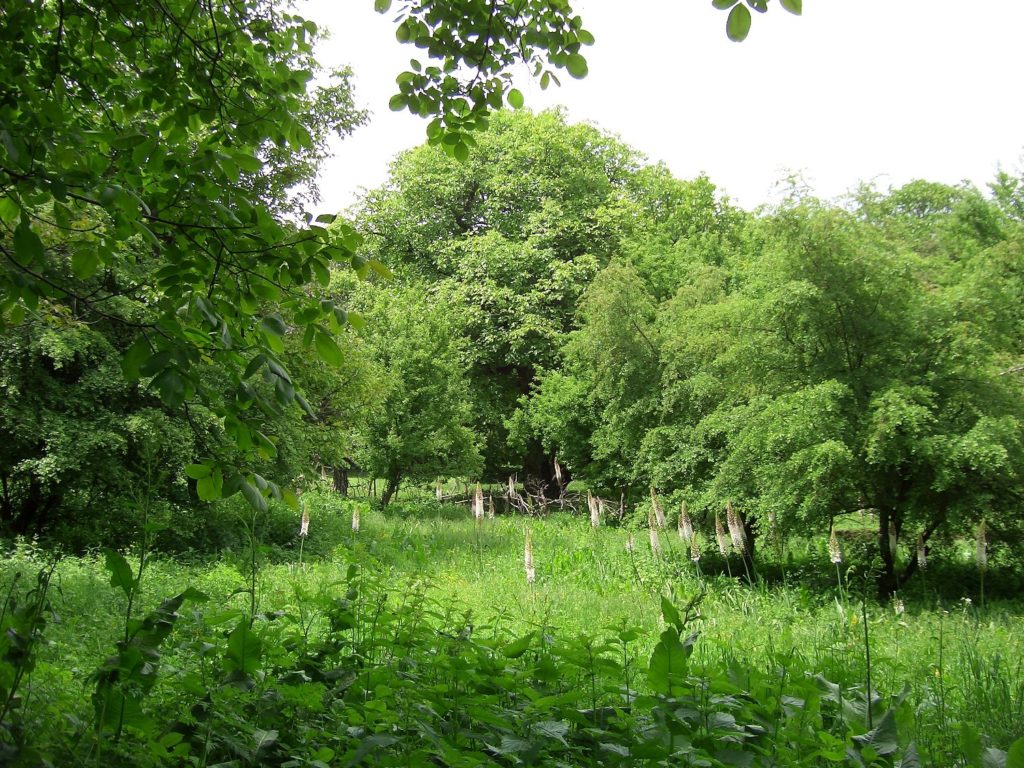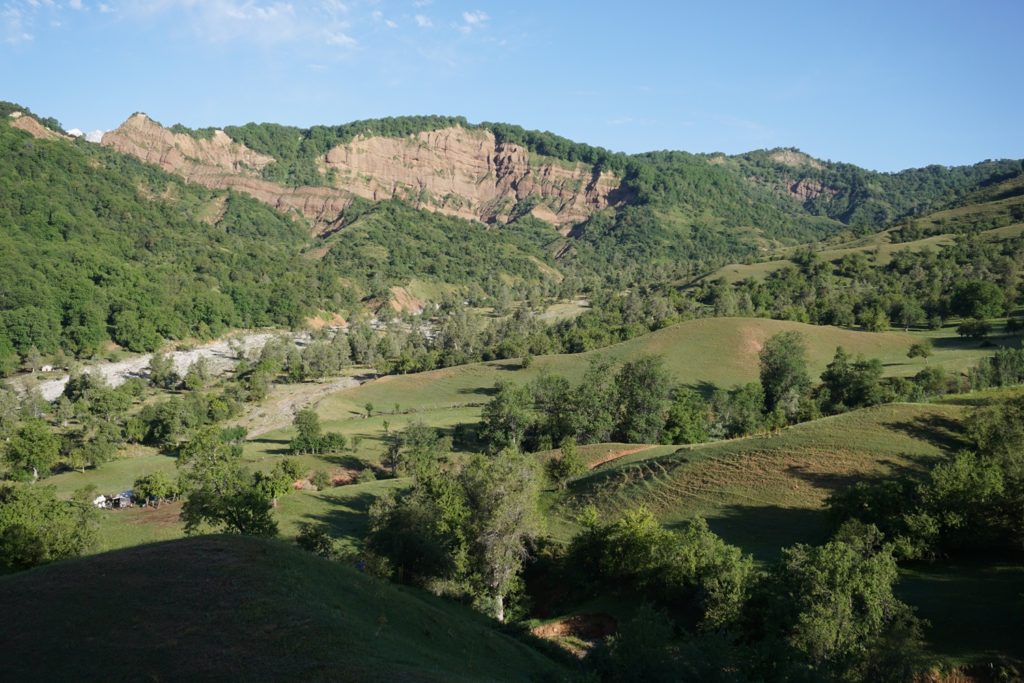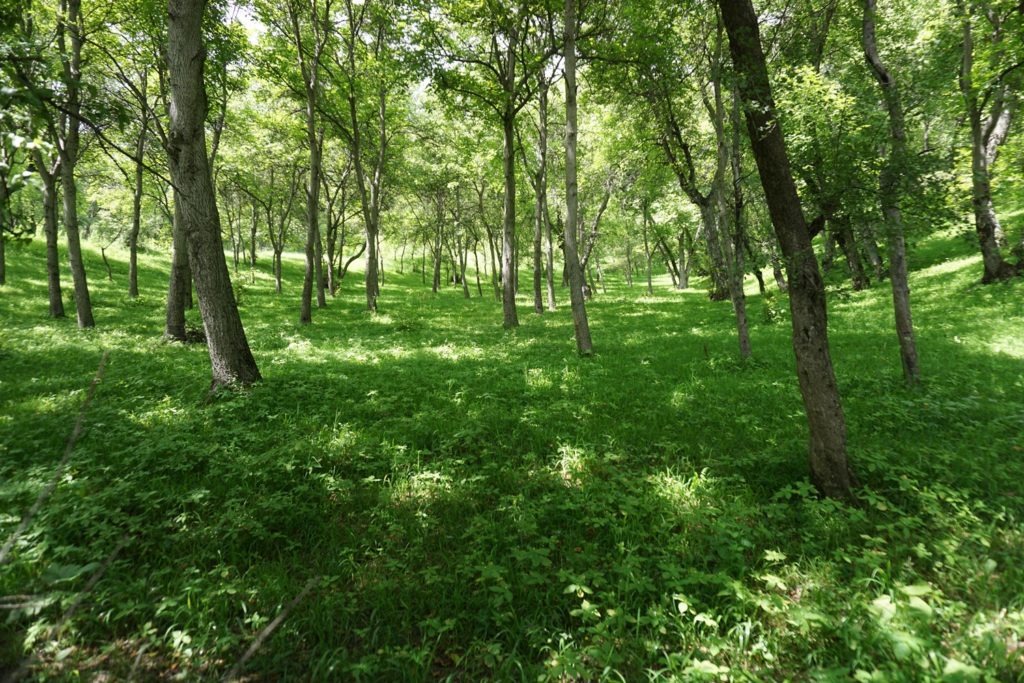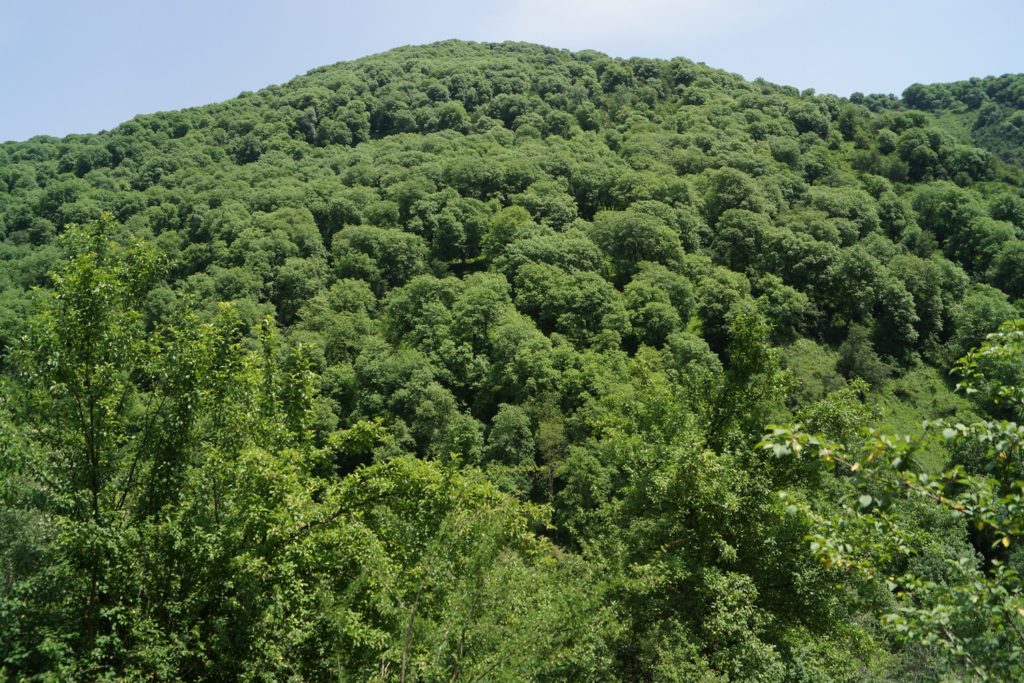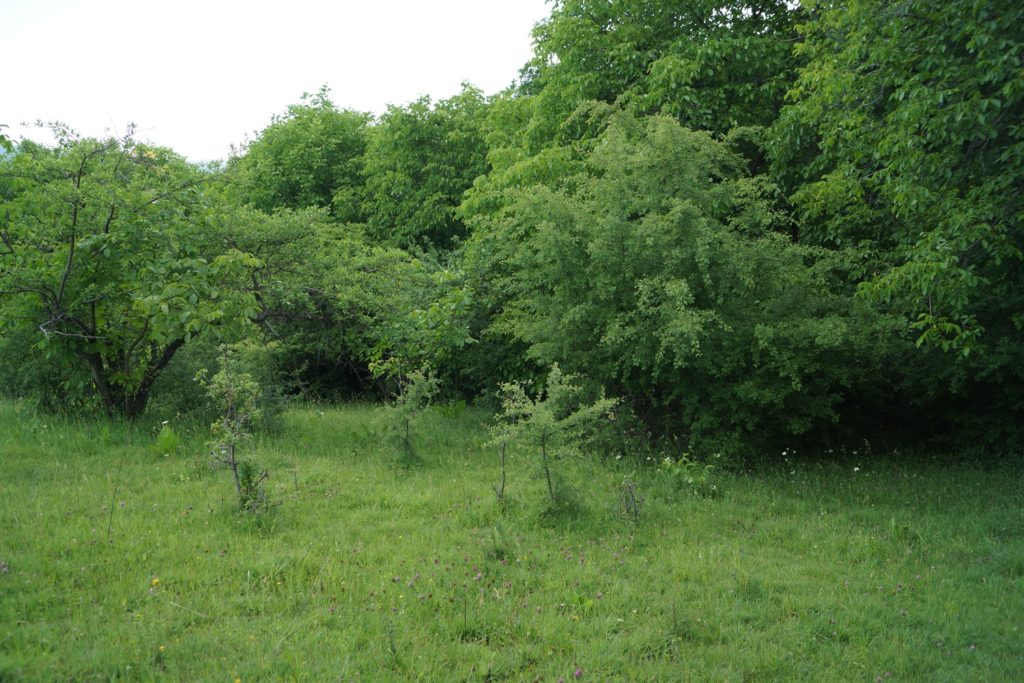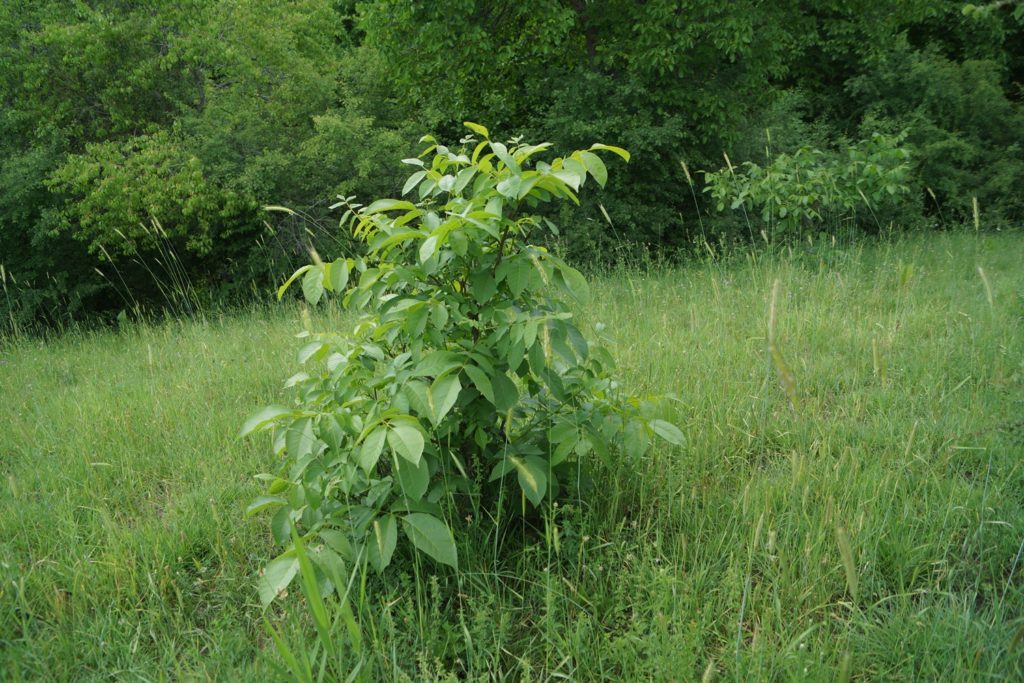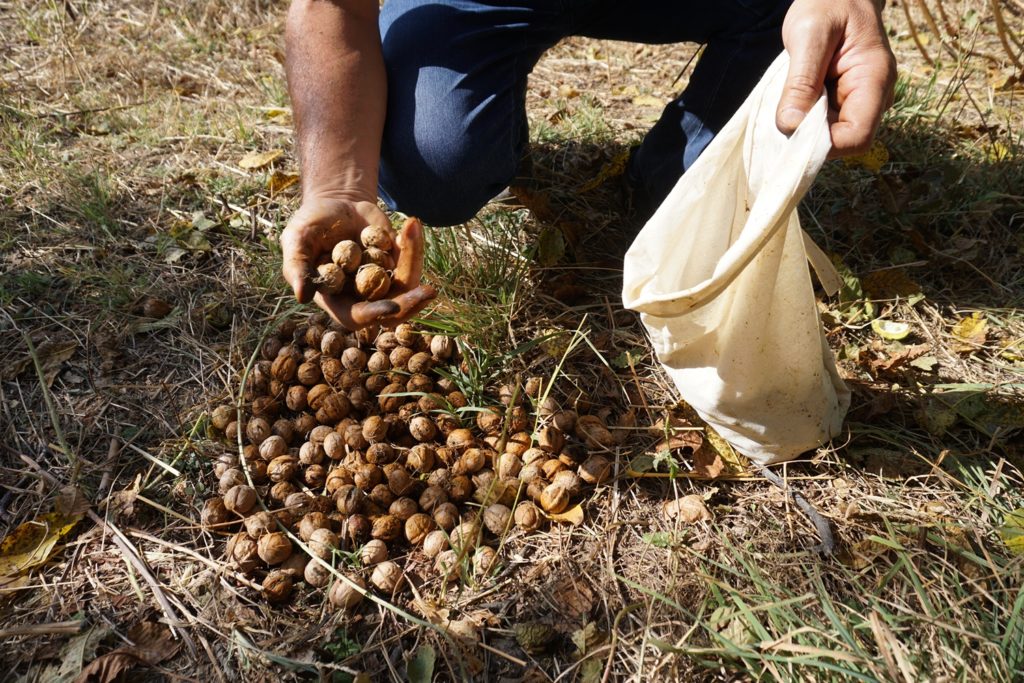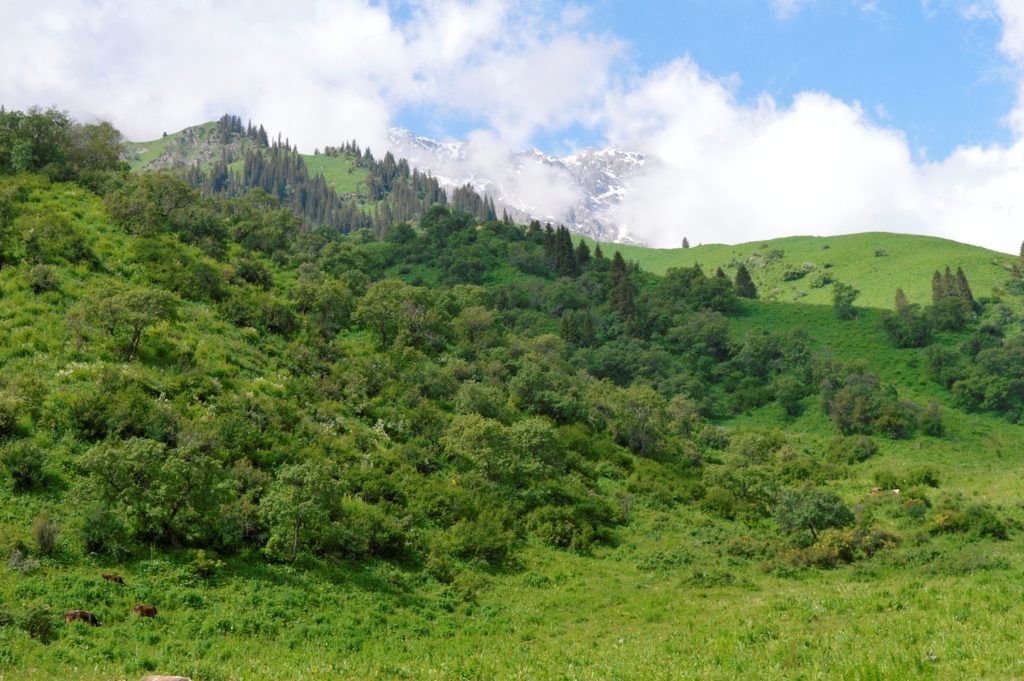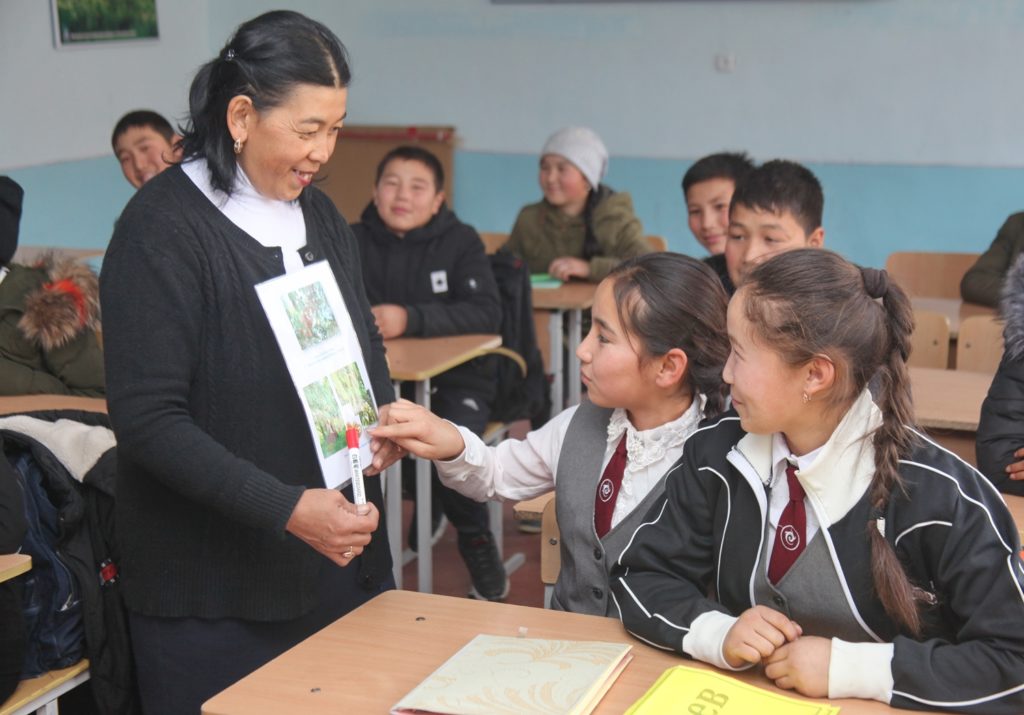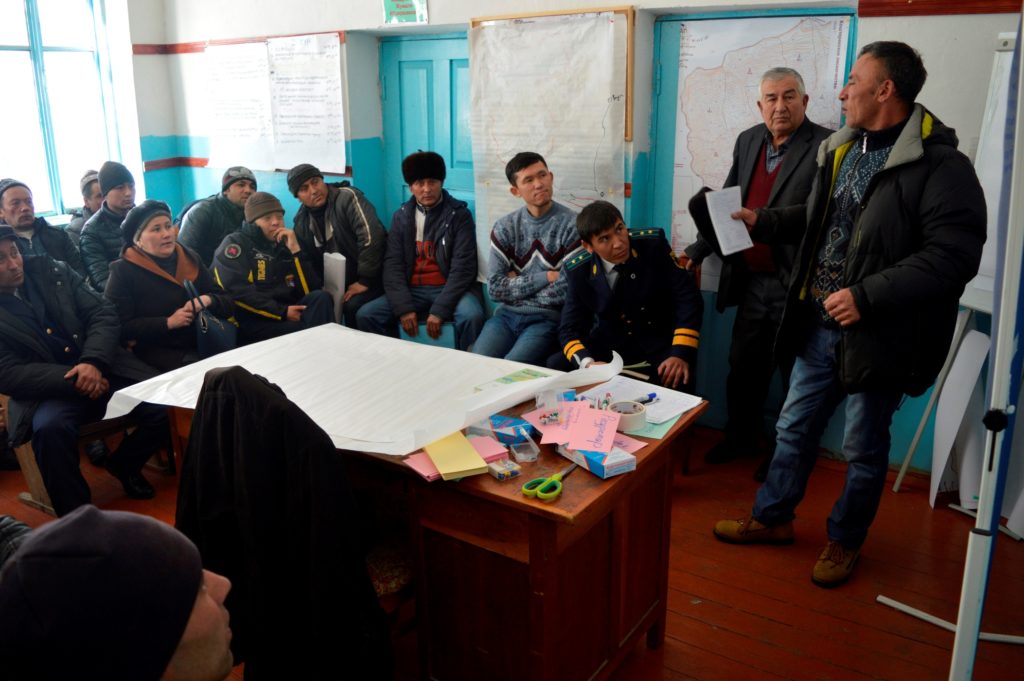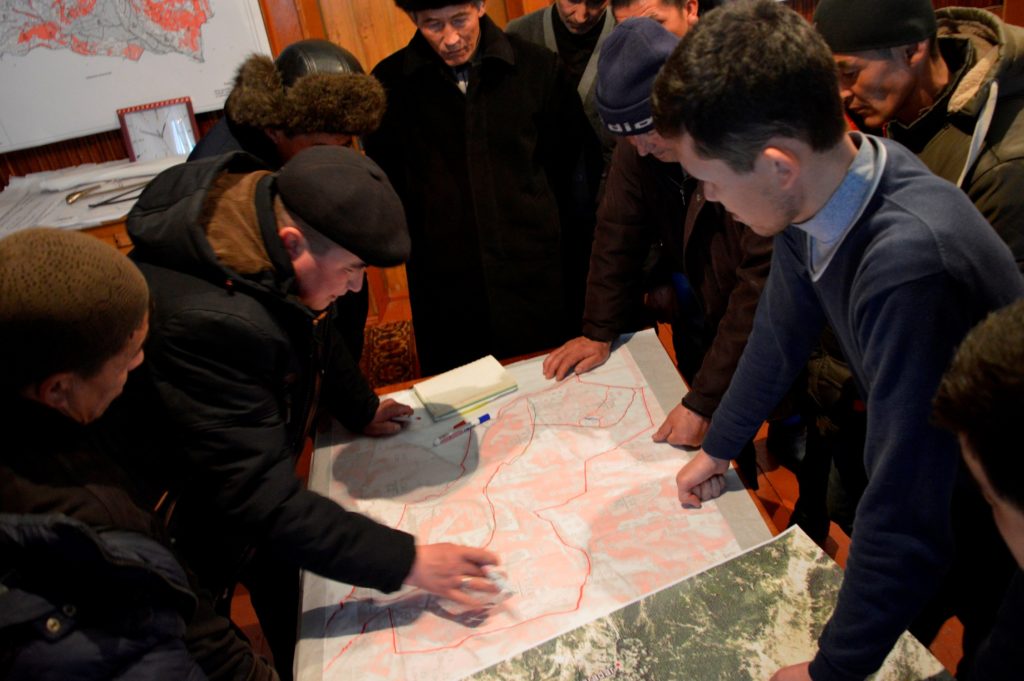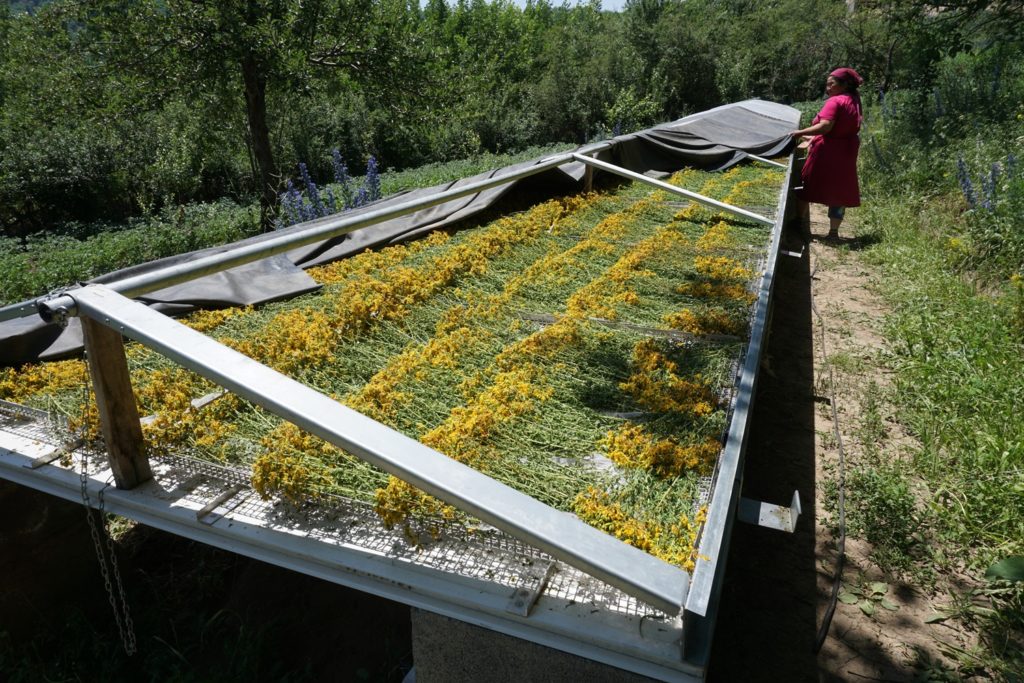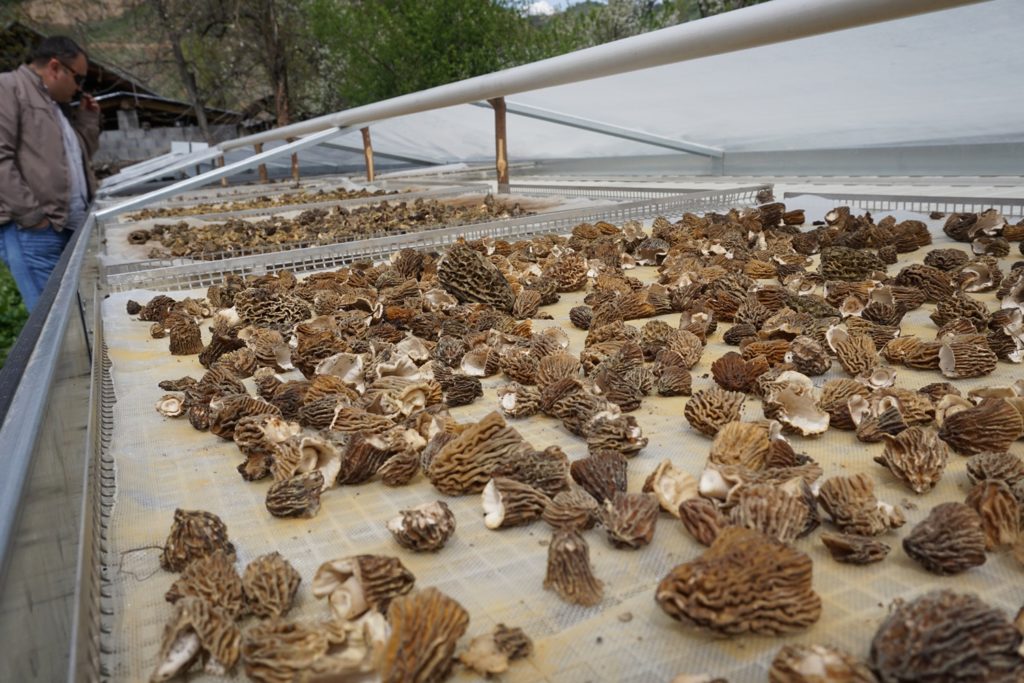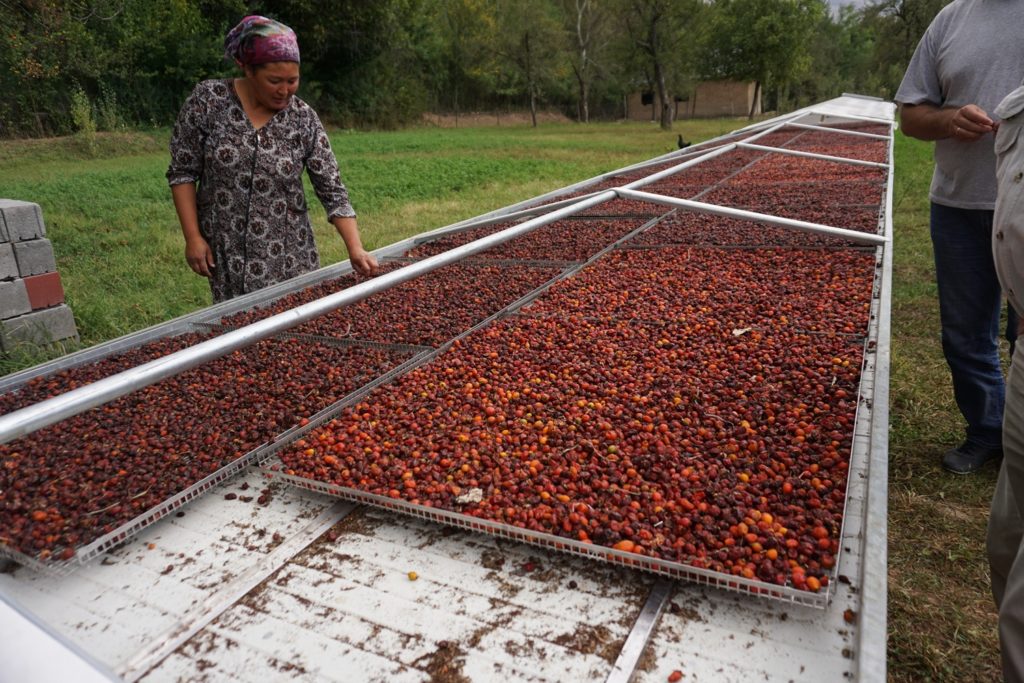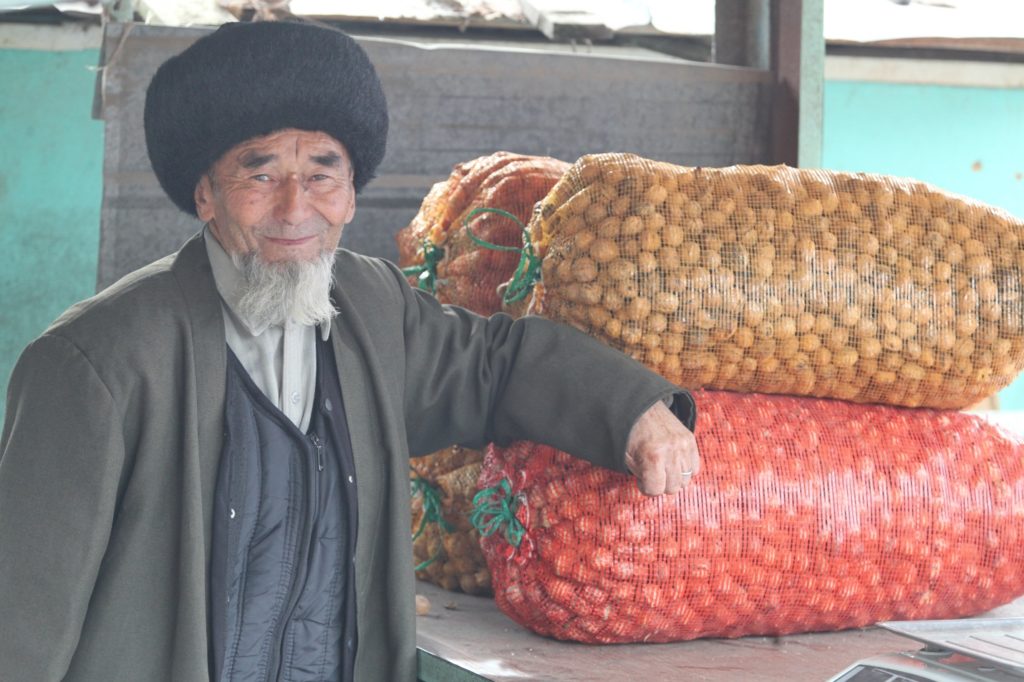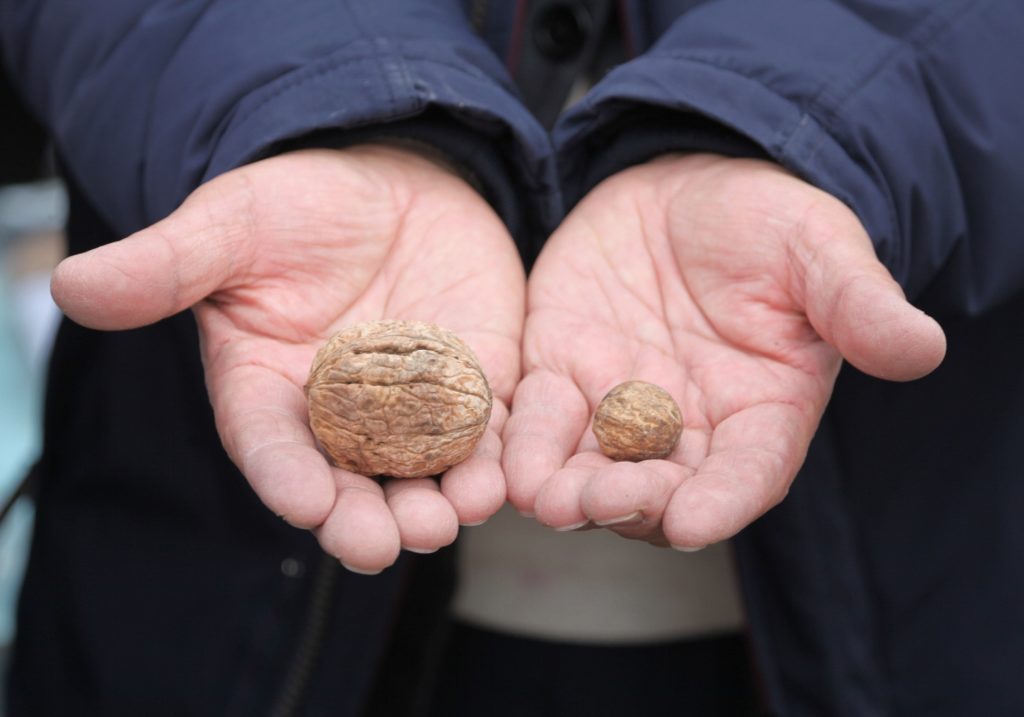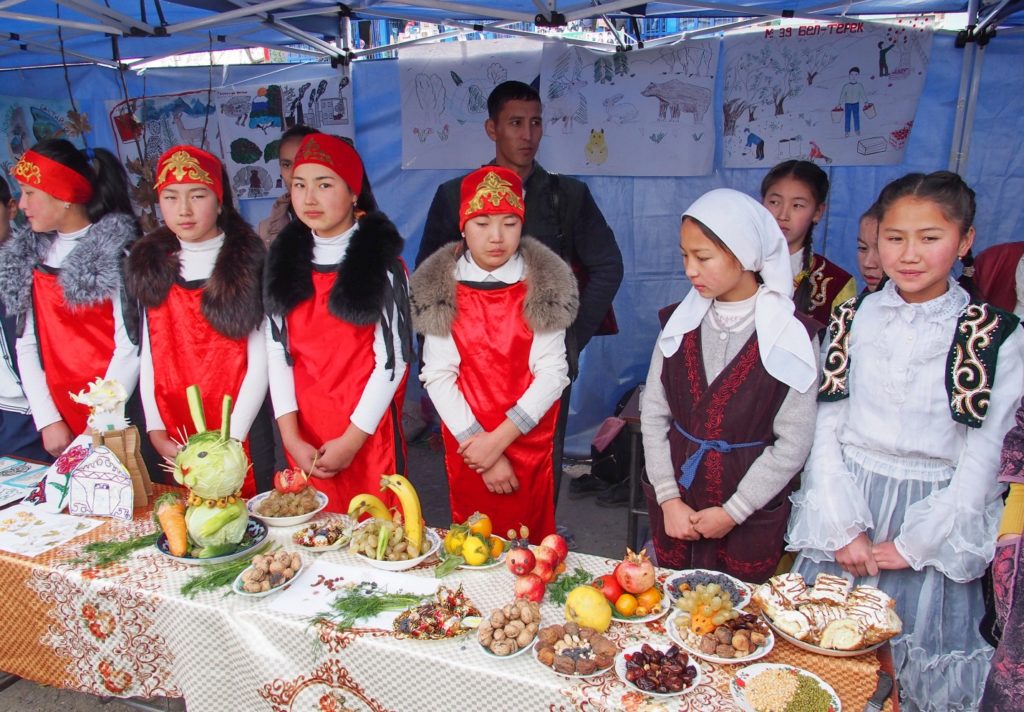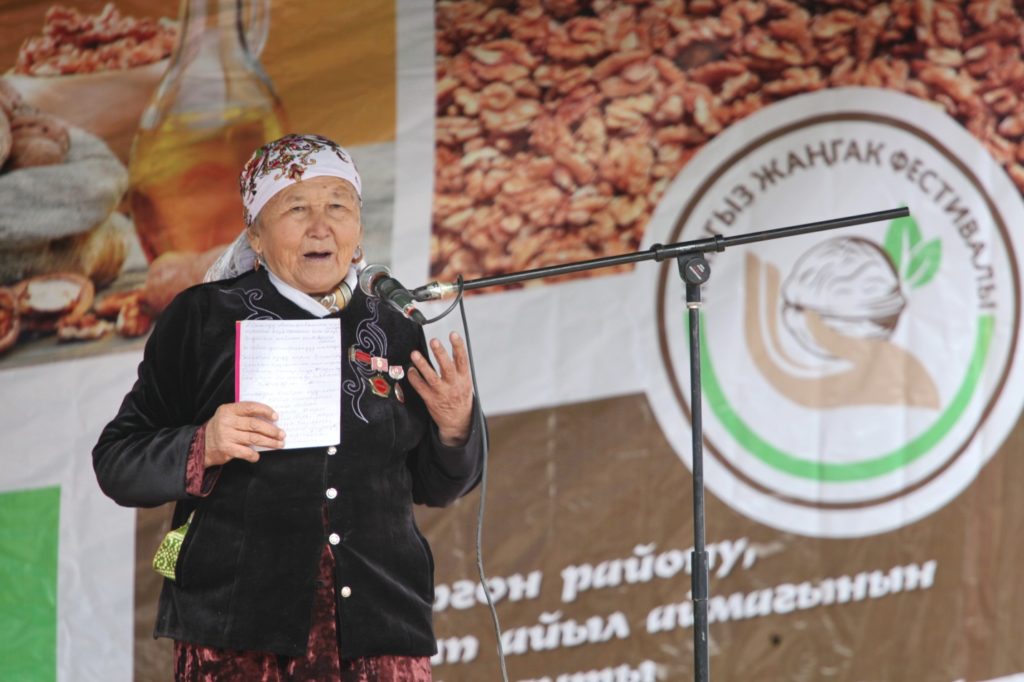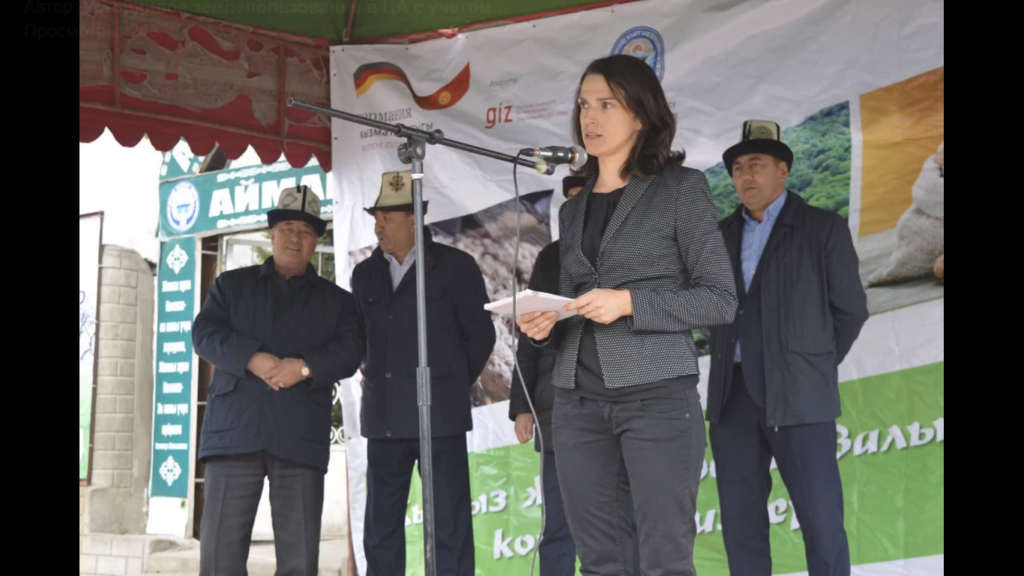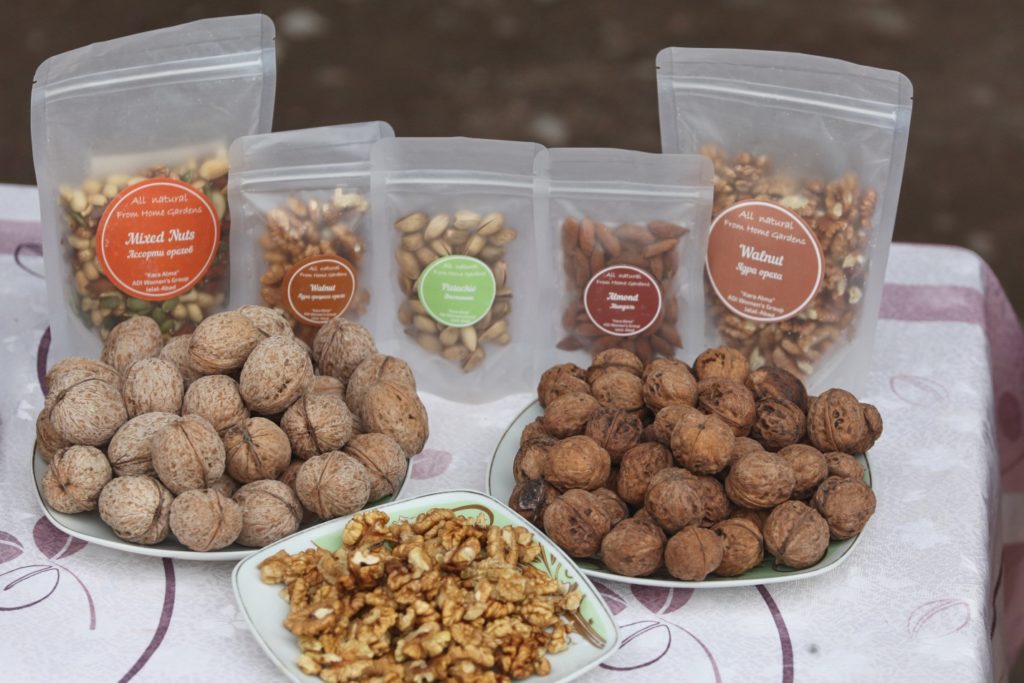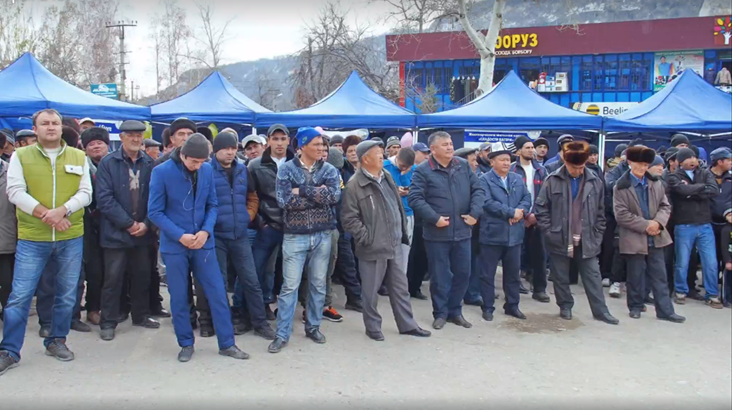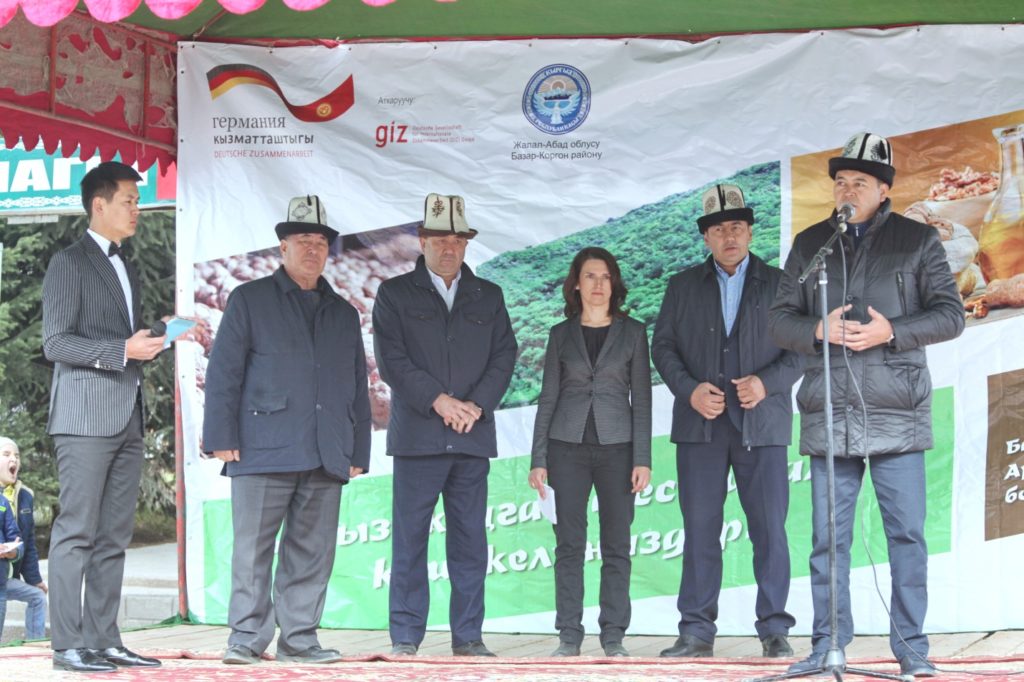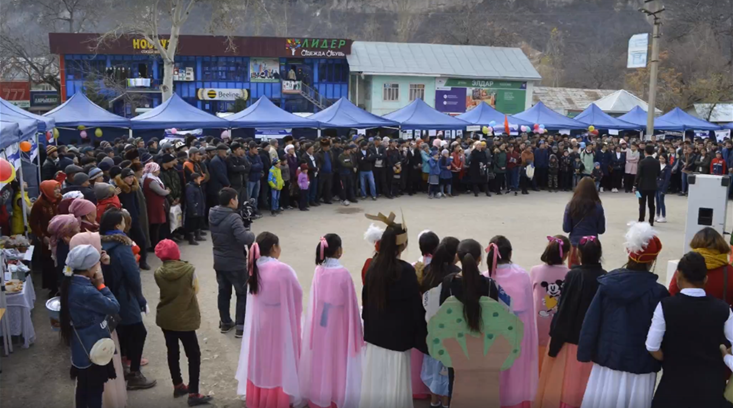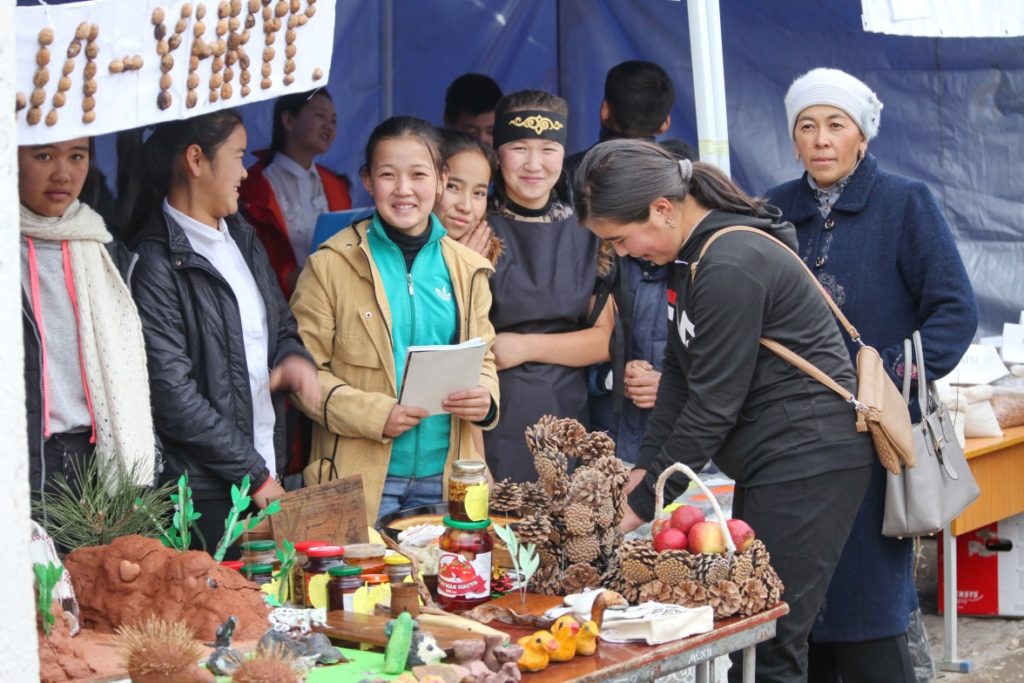Partners: State Agency on Environment Protection and Forestry under the Government of the Kyrgyz Republic, Ministry of Agriculture and Land Reclamation of the Kyrgyz Republic, PF Camp Alatoo, Public Ecological Union «LesIC South”, NGO “AgroLid”, Rural Advisory Service (Jalal-Abad), UNIQUE forestry and land use GmbH (Germany)
Project period: 2018-2020
Context
Context Despite the relatively small territory they cover, the woodlands of southern Kyrgyzstan constitute an important chain of biological diversity, both for Central Asia and the world. As many domesticated varieties of fruit and nut trees have their historical origins in these forests, ecological conservation here is of national and global significance. Much as their ancestors before them, the local population is highly dependent upon the natural resources proffered by the forests for their livelihood, especially nuts and pasture (livestock).
Kyrgyzstan is counted among the countries predicted to be the most severely affected by global climate change.
With 93 percent of its territory mountainous, it is especially susceptible to the hazards of glacial melt. This is expected to exacerbate soil erosion, resulting in landslides and the deterioration of pasture and forest resources. And it is particularly as the southern woodlands serve as natural regulators of the regional water cycle, especially for downstream areas.
The existing system of forest and pasture management will be unable to cope with consequences of climate change, in large part because it simply lacks management at all. For instance, between 50 and 70 percent of pastureland has already been degraded due to livestock overgrazing.
The relevant state structures struggle with resolving conflicts related to land use and involving local communities in decision-making processes. Local communities themselves are also in no position to practice sustainable natural resource management models for the conservation of biodiversity, adaptation to climate change and increasing local incomes.
Our objectives
In close collaboration with national and local partners, we have been aiming to incorporate a sustainable natural resource management model into the economic practices of southern Kyrgyzstan’s woodland-dependent communities, thereby assisting them in conserving the biodiversity they depend upon, adapting to climate change and increasing their income.
Our measures
Our project has been implemented in Bazar-Korgon, a district of the Jalal-Abad region. 13,000 hectares are covered by natural walnut forests – the largest of their kind in the world. Another 36,700 hectares are used as pasture, while highlands constitute the remaining 75,300 hectares and serve as home to more than 47,000 people.
We have been focusing our work in four main directions: The first has been to support state agencies and local communities to further develop and establish a joint management model for natural resources. Forest- and pasture-users have been closely collaborating with throughout this process. In addition to piloting national forestry reform, joint management at the local level will help establish a balance between the roles and responsibilities of different actors involved in land management.
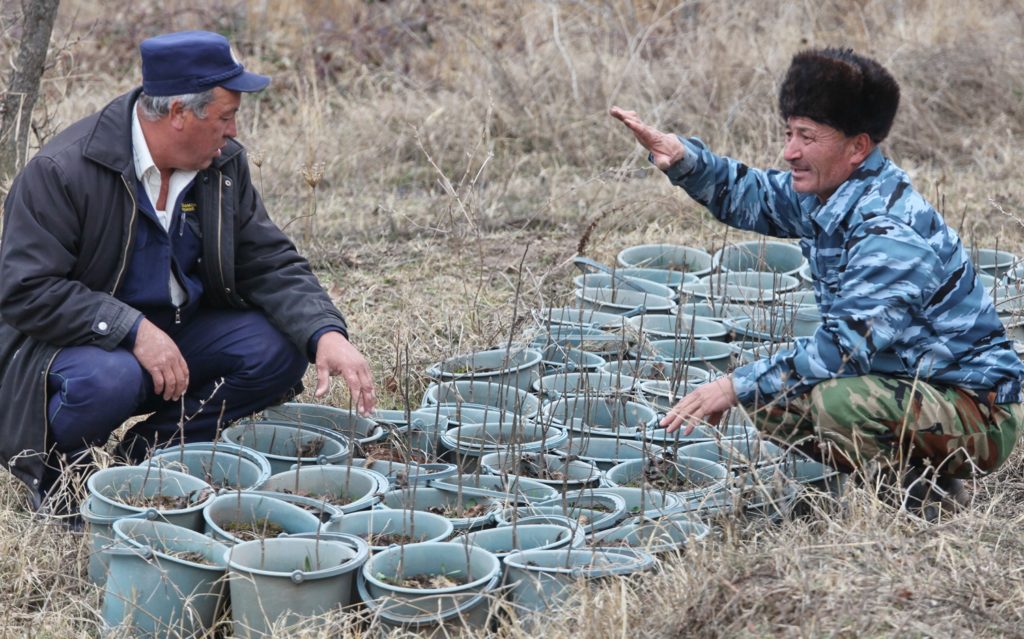
The second field of action has entailed increasing the dissemination of innovations for sustainable land use in the project area. To institutionalise best practices, forest enterprises, forest users and local organisations have been supported in organisational development processes to establish exchange and integrate specific interests of women.
Six local forest enterprises have received assistance in planting a mixture of selected, native walnut and fruit trees that are supposed to be well-adapted to climate change.
The third field of action has focused upon improving livelihoods for the local population. The premise has been that if local people have other, more sustainable options for the use of forest resources, walnut forests can recover. Hence, we have introduced alternative methods of income generation on a broader scale. For instance, we have assisted the development of quality and product standards for non-timber forest products to improve export possibilities. At the same time, we have supported the implementation of production processes according to food safety standards.
The fourth field of action has been aimed at raising awareness of the importance of environmental issues. On the national level, this has been done in close collaboration with the State Agency for Environmental Protection and Forestry and the Ministry of Education, while locally this has been done in close collaboration with governmental institutions as well as NGOs.
With our partners, we have developed a manual for teachers that is complementary to the national curriculum. Through a multiplier approach with teachers, new approaches of environmental educational activities will achieve more outreach and sustainability.
Our results to date
A new pasture management model has been introduced with the participation of local forest enterprises and pasture committees. The model is the result of an intensive discussion process between forest enterprise staff, representatives of pasture committees and administrations at district and village level that was facilitated by our experts.
Integrated management plans for natural resources that take into consideration factors such as tourism and value chains have been developed with the key stakeholders of three pilot forest enterprises. 400 forest and pasture users and forest enterprise staff worked jointly. This process helped build constructive working relationships between stakeholders and strengthened trust between forest users and the forest enterprise.
Tree nurseries have received support from the project in order to produce high-quality and climate-resilient seedlings of walnut and fruit trees. These seedlings have then been used to afforest fenced plots and rejuvenate the woodlands.
Ten user groups have won a business plan competition and have received solar dryers for drying and processing forest products, thereby enabling them to sell quality dry fruits, mushrooms and medicinal herbs at higher prices. These groups are now in the process of expanding their types of products. Furthermore, the marketing conditions have been improved through defining a UNECE standard for kernels of wild walnuts. Additionally, two local products of forest derived fruit candy and walnut oil have branded themselves.
Since February 2015, thanks to quarterly information tours in the project areas, local community-members have improved their knowledge of sustainable pasture and forest management techniques. In the course of raising awareness about the uniqueness of southern Kyrgyzstan’s woodlands, our project supported partners in initiating the “Walnut Festival”, a popular event attracting hundreds of people annually.
